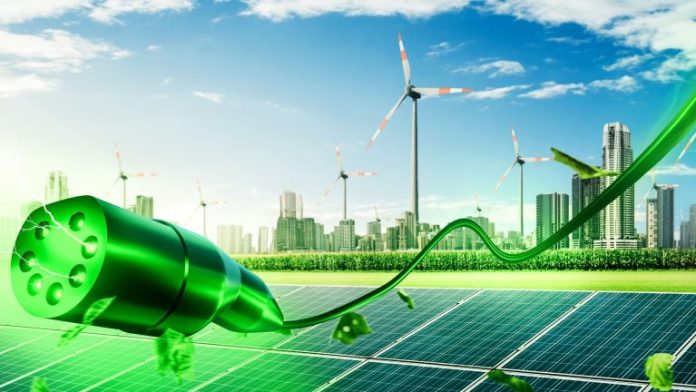RESC Report on Power Sector Trends for February 2024
Aware of the interest in understanding the evolution of electricity consumption and production, especially renewable energy, in Croatia and Europe, the importance of these technologies in combating climate change, and reinforcing our commitment to be current with statistical data in the power sector, we present a monthly report on the power sector opportunities in the Croatian power system.
Before a detailed analysis of the trends in February 2024, we will present a table of energy transition in Croatia over the last six years.
Installed capacity and structure of power plants in Croatia from 2018 to 2024 and as of January 1, 2024.
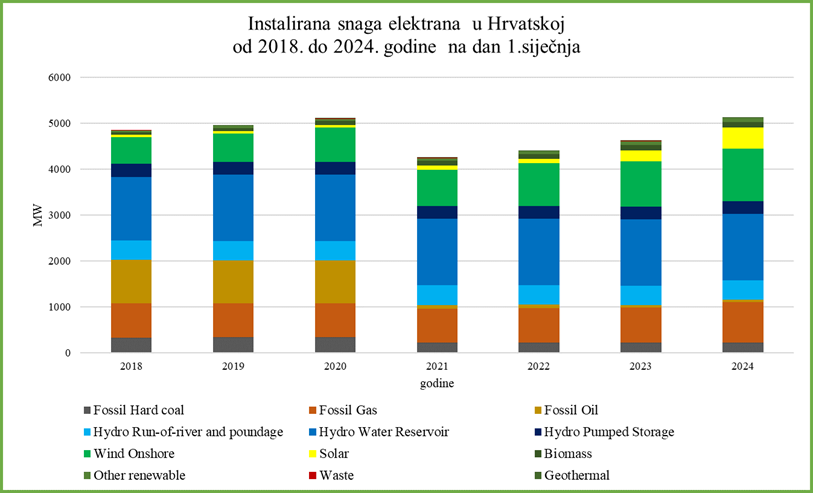
During the observed period, there was a significant growth of wind farms and solar plants on the path of energy transition and complete decarbonization. Also, there was a noticeable reduction in the capacity of oil-fired power plants.
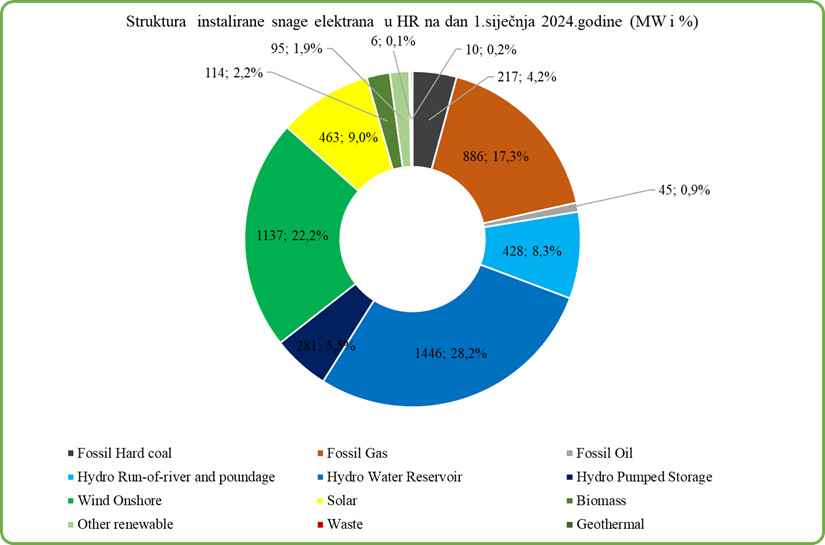
As of January 1, 2024, the total installed capacity of power plants in Croatia was 5,128 MW, of which:
renewables 3,970 MW or 77.6%
non-renewables 1,128 MW or 22.4%Connected to the transmission network were 4,285 MW (83.6%), and to the distribution network 843 MW (16.4%). The available production capacities should include a share in the Krško Nuclear Power Plant (50%) of 348 MW.
Power Sector Report for February 2024
In February, the climatological and weather characteristics in Croatia were more similar to a spring than a winter month, with significantly higher temperatures and reduced windiness.
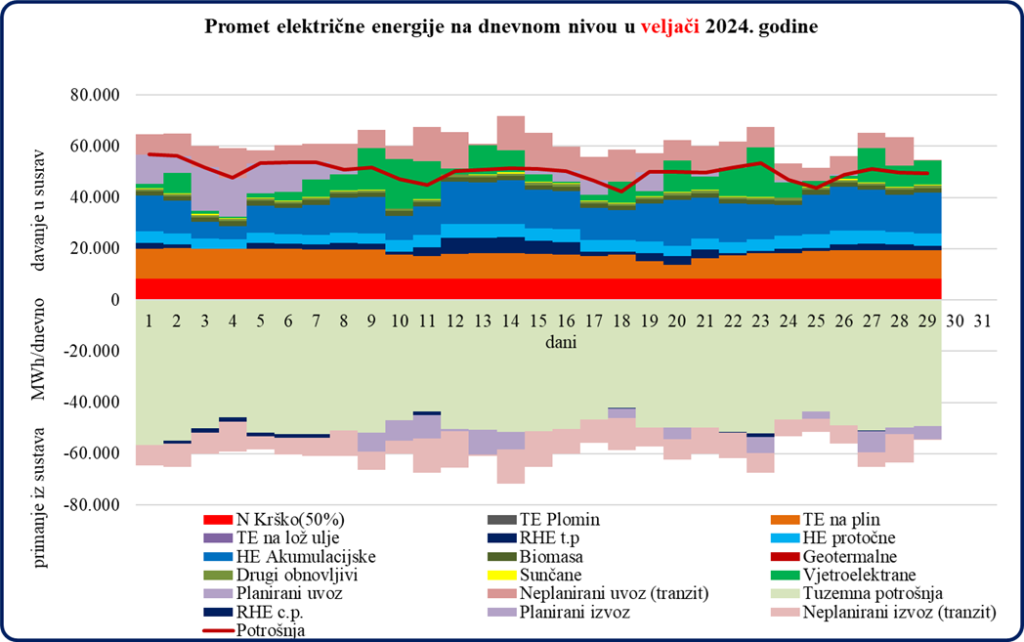
The month was marked by very high production of hydropower plants due to water inflow and reservoir filling, while the Plomin Thermal Power Plant was out of operation all month, and the Velebit Pumped-Storage Hydro Power Plant had significant pumped-storage operation (pumping operation consumption was 13 GWh).
To balance the hourly balance, occasional exchanges on interconnections were necessary, so the import of electric energy amounted to 104 GWh, and export 75 GWh, which is a difference in the balance on the side of imports of 29 GWh.
The Krško Nuclear Power Plant operated at full power and all safety systems were operational, and the Sava River was heated far below the allowed 3 ºC.
Renewable energy sources produced more electricity this month than fossil fuel thermal power plants (11 GWh more) and the Croatian part of the Krško Nuclear Power Plant (59 GWh more), thus taking second place in the energy mix.
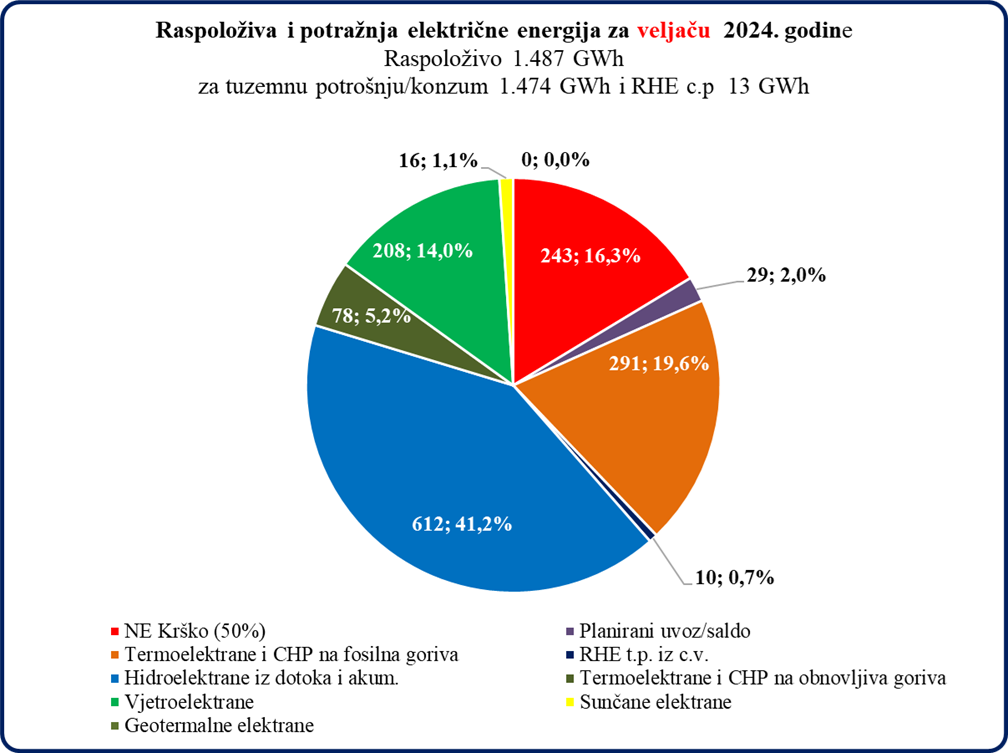
Hydropower plants played a dominant role in electricity production (612 GWh, 41.2%) with reservoir filling of 71 GWh.
Other RES again took second place (302 GWh, 20.3%) ahead of non-renewables (301 GWh, 20.2%), ahead of the Krško Nuclear Power Plant (50%) (243 GWh, 16.3%) and planned imports (29 GWh, 2.0%).
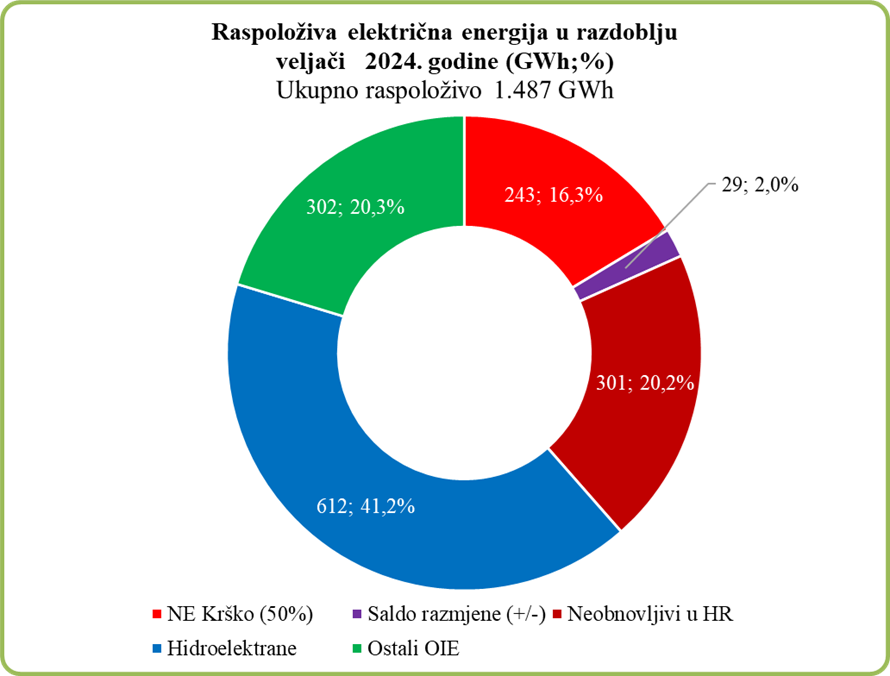
Coverage of total consumption by renewable sources
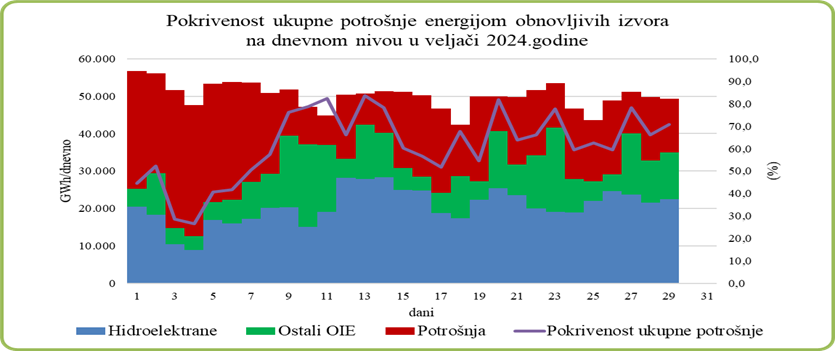
The maximum daily coverage of total energy consumption by renewable sources in February was 83.6% (February 13), with hydropower participating with 54.9%, and other RES with 28.7%.
The minimum daily coverage of total energy consumption by renewable sources in February was 26.5% (February 4), with hydropower participating with 18.7%, and other RES with 7.8%.
Wind power production in February 2024
The installed capacity of all wind farms as of January 1, 2024, was 1,160.15 MW, or approved power for network connection 1,136.85 MW.
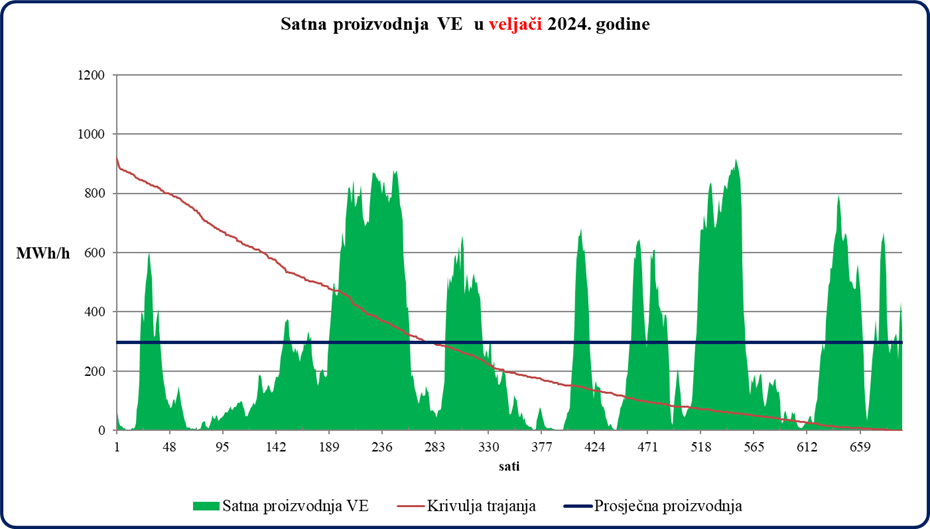
Windiness was characteristic of spring months, not February, which has the highest power utilization factor of the year.
The total production of wind farms in February was 208 GWh, representing low production for this month. The power utilization factor was 26.3% while the average for this month in the period from 2011 to 2023 is 34.1%.
Solar power plant production in February 2024
By March 1, 2024, there were 510.5 MW of solar plants in operation in the power system, of which 498.2 MW were connected to the distribution network, and 12.4 MW to the transmission network.
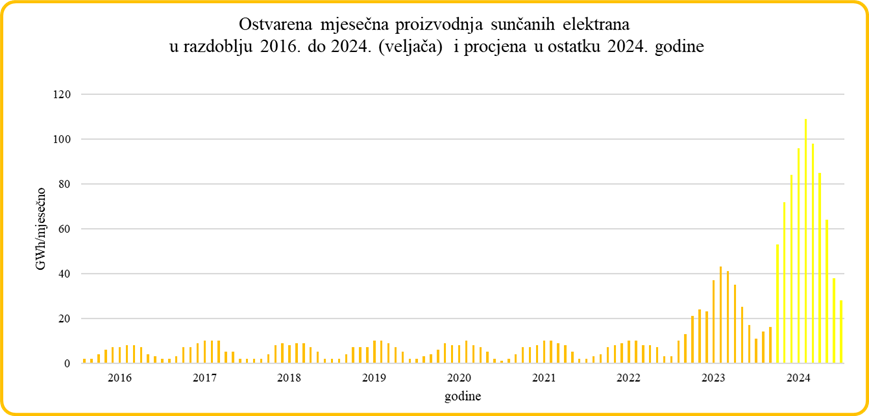
There is a significant jump in SE production in 2023 and monthly (seasonal) oscillations due to changes in insolation. In the annual balance, 70% of SE production is achieved in the April-September period.
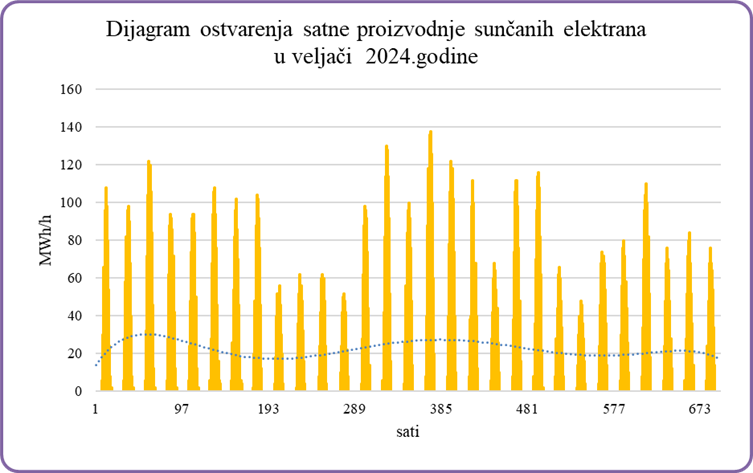
The realized power utilization factor of SE in February 2024 was 4.9%. Visible was the increased daily production due to the lengthening of days (insolation) during February.
Other characteristics of power sector opportunities for February 2024
The maximum daily turnover was 71,774 MWh, the maximum daily consumption was 56,670 GWh. The transmission and distribution networks endured well. Due to the higher air temperature by 4.6 °C compared to the average, electricity consumption for heating was lower by 36 GWh compared to the usual consumption in February.
| February | Monthly | Monthly | |
| GWh | GWh | ||
| System input | 1.929 | System output | – 1.929 |
| Production at threshold Non-renewables in CRO | 301 | Konzum | – 1.474 |
| Production at threshold Renewables in CRO | 914 | RHE c.p | -13 |
| Krško NPP (50%) | 243 | ||
| Planned import | 104 | Planned export | – 75 |
| Unplanned import (transit) | 367 | Unplanned export (transit) | -367 |
The average hourly price in February this year was €67.19/MWh, and in February last year €145.60/MWh, which is a decrease of €78.40/MWh, or 53.9%.
A decrease in prices in 2023 is visible, which continues in 2024.
This report was created using publicly available data published on the websites: HEP, HOPS, ODS, HROTE, CROPEX, Krško NPP, ENTSO, DZS, RTE France, RED Electrica, World Data, IEA, EEX, EPEX, IRENA
The analyses published in the monthly RESC Reports are made available to all those who wish to be informed about the operation and development of the Croatian power system. The quality and continuity of the service we provide in these analyses stem from a sustainable vision focused on a culture of informing about the operation and development of renewable energy sources in our country.


